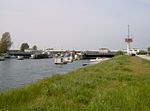2006 Falsterbo Swedish Coast Guard C-212 crash
2006 in Sweden21st century in Skåne CountyAccidents and incidents involving military aircraftAccidents and incidents involving the CASA C-212 AviocarAviation accidents and incidents in 2006 ... and 2 more
Aviation accidents and incidents in SwedenOctober 2006 events in Europe

On 26 October 2006, a CASA C-212 Aviocar aircraft of the Swedish Coast Guard crashed into the Falsterbo Canal, Sweden.
Excerpt from the Wikipedia article 2006 Falsterbo Swedish Coast Guard C-212 crash (License: CC BY-SA 3.0, Authors, Images).2006 Falsterbo Swedish Coast Guard C-212 crash
Boltensternsvägen, Vellinge kommun
Geographical coordinates (GPS) Address Nearby Places Show on map
Geographical coordinates (GPS)
| Latitude | Longitude |
|---|---|
| N 55.4 ° | E 12.95 ° |
Address
Boltensternsvägen 50
236 38 Vellinge kommun
Sweden
Open on Google Maps







